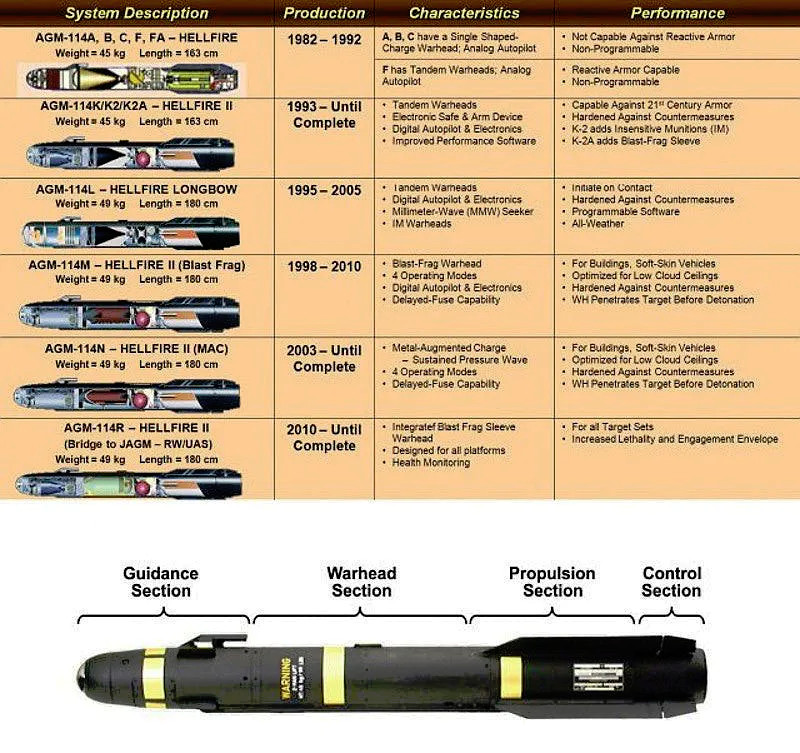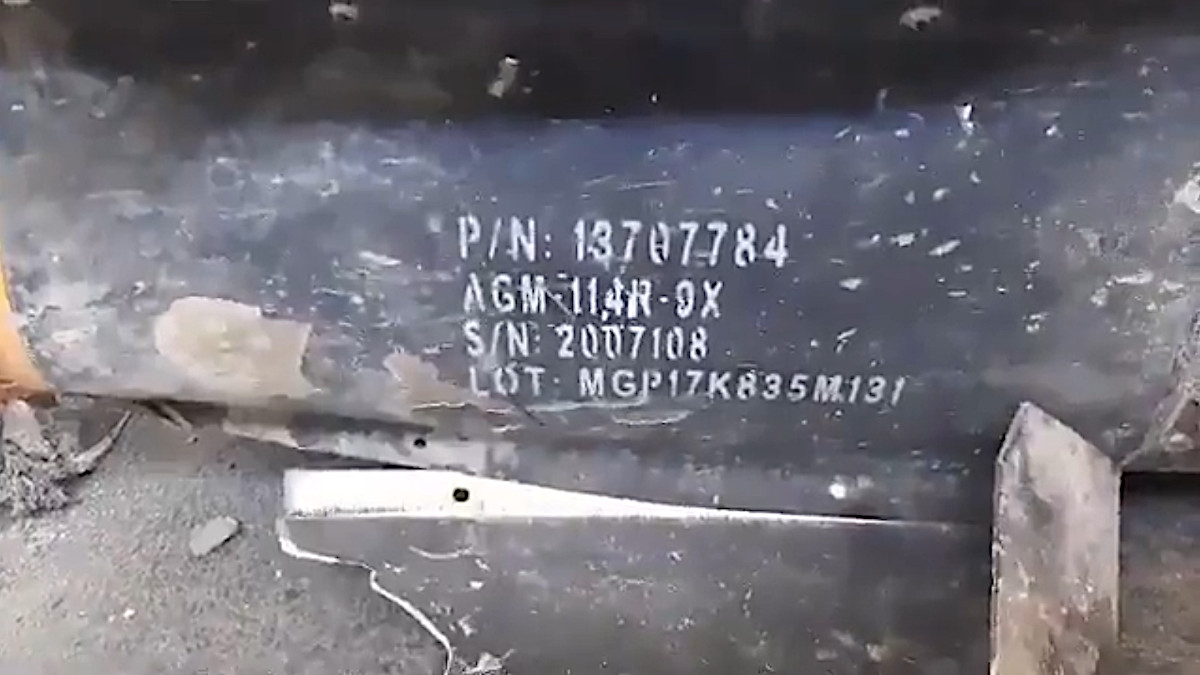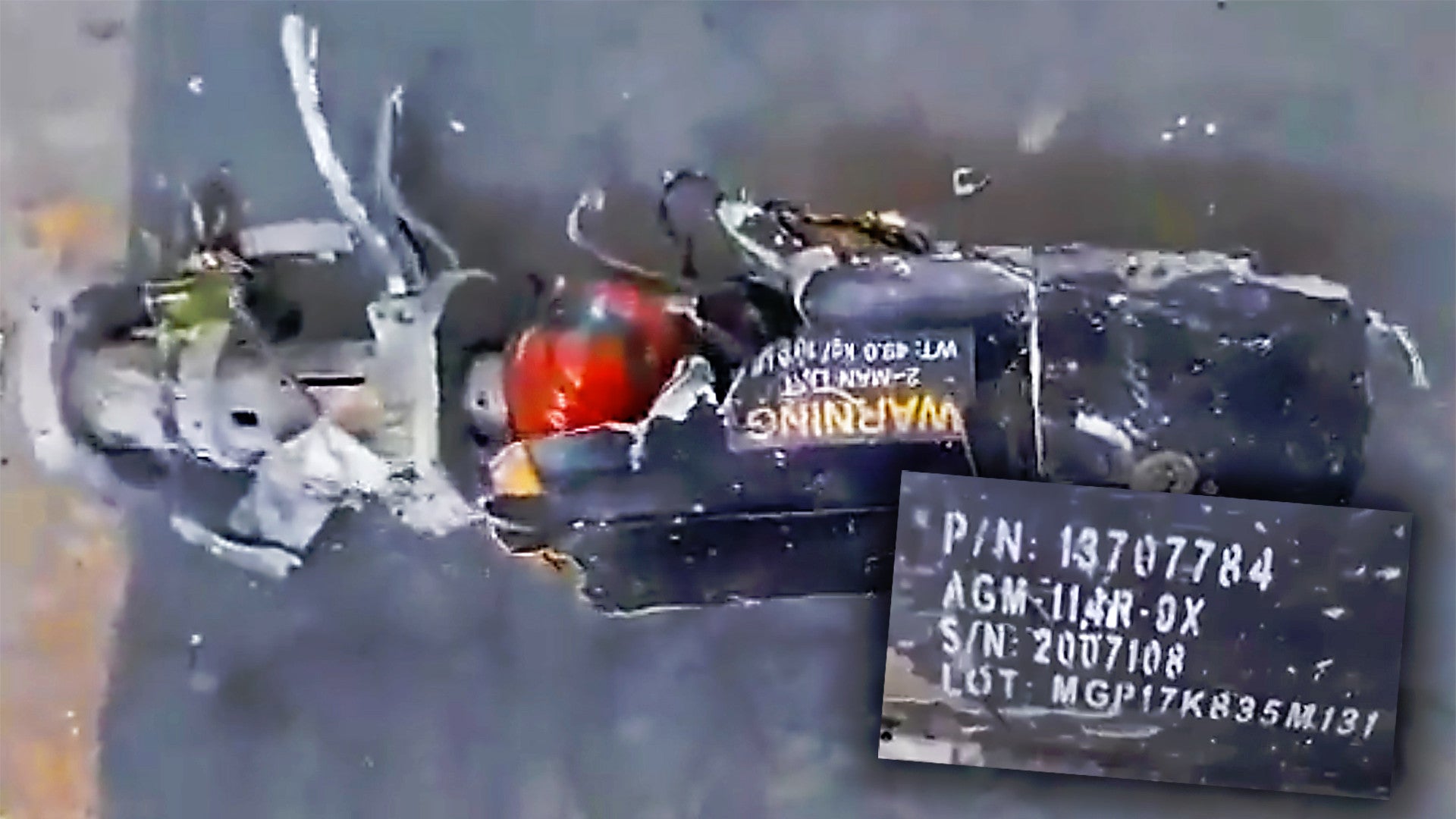Video has emerged online that shows the remains of three AGM-114R9X missiles used in a recent strike on Al Qaeda-linked terrorists in Syria, providing the best look yet at the innards of this mysterious version of the venerable Hellfire, which has six pop-out sword-like blades in lieu of a traditional explosive warhead. The War Zone was one of the first to report on a previous photograph that gave us our very first look at the inner workings of this weapon. Visible markings, which include the R9X designation, seen in the new video also offer additional details.
The video clip first appeared on social media on June 17, 2020. This comes three days after an AGM-114R9X strike on an SUV in Syria’s Idlib Governorates. The U.K.-based Syrian Observatory for Human Rights subsequently said its sources had informed it that two individuals, one of Jordanian nationality and another from Yemen, in the vehicle had died in the strike. Both were reportedly members of Hurras al-Din, a terrorist group affiliated with Al Qaeda, which the U.S. government also refers to simply as Al Qaeda in Syria, or AQ-S.
Experts and observers had previously determined that at least three, and possibly four, AGM-114R9Xs had struck the SUV in Idlib in total, which would match up with what looks to be components from three distinct missiles in the video. In once case, the remains of at least three blades are visible attached to a central hub structure. A second hub, with what appears to have a more complete blade still attached, is also present.
Red spheres are also seen. Diagrams of previous AGM-114 variants, including the basic AGM-114R version, show a similar component located toward the rear of the missile. This is what is called a ‘pneumatic accumulator’ and is not unique to this rare variant of the missile.

The same hub structure and blade stubs are also seen in a photo from the aftermath of a previous targeted strike in which one of these missiles was employed against a minivan in Idlib in December 2019. You can read the War Zone‘s full initial assessment of how the missile works here. That strike killed a member of Hay’at Tahrir al-Sham (HTS), which Hurras al-Din split from in 2017. HTS, which had rebranded itself from the Al Nusra Front earlier that year, has at least officially renounced its links to Al Qaeda.
The video also appears to show, for the first time, the official markings on the AGM-114R9X, which are, for this particular example, as follows:
P/N: 13707784
AGM-114R-9X
S/N: 2007108
Lot: MGP17K835M131

While the clip is unconfirmed, publicly available records show that this part number, or P/N, corresponds to a “Guided Missile, Surface Attack” and indicate that it was previously associated with a Hellfire variant known as the AGM-114R9G. Of the known AGM-114R subvariants, which you can read about in greater detail in this past War Zone piece, information about the R9G version is particularly scant.
However, information the War Zone previously received had suggested that AGM-114R9G was the original designation for the sword-blade-armed variant, but that it had been redesignated as the R9X as part of a decision to place it in a more secretive realm. This would fit with the fact that, despite its clear, if gruesome effectiveness and its low risk to innocent bystanders, the weapon appears to be issued only on a very limited basis.
By all indications, drones that the U.S. military’s notoriously shy Joint Special Operations Command (JSOC) and the Central Intelligence Agency appear to be the only ones to carry it. The U.S.-led coalition fighting against ISIS in Iraq and Syria notably told AFP that it was not involved in the most recent strike, which actually aligns with previous U.S. military statements that have suggested that this and other strikes against Al Qaeda-linked groups in northwestern Syria are part of a separate and distinct operation.
The publicly available information regarding this particular part number also shows that the Air Force has been the service officially responsible for managing this variant since 2017. That is also the year when the first known instance of this weapon being employed took place, when one of the missiles killed Al Qaeda’s then-number two leader Abu Khayr al Masri while he was driving in Idlib. The War Zone Zone
was first to highlight that he had likely died at the hands of a new type of exotic low-collateral damage munition.
So far, the U.S. military has not officially confirmed the existence of the R9X at all, unlike the AGM-114R9H, a publicly acknowledged “very low collateral damage” version of the Hellfire that may not have a warhead of any kind inside. This is all despite now extensive media reporting and a clear and obvious increase in its use, primarily in Syria. In January, the missile was employed for what appeared to be the first time in Afghanistan. The Wall Street Journal, which first broke details about the R9X in 2019, also reported that the weapon had been fired at targets in Libya, Iraq, Yemen, and Somalia, as well.
Despite this heavy secrecy surrounding the missile, it leaves far too distinct impact marks, damage effects, and identifiable wreckage due to the lack of an explosive warhead to conceal its use. The fact that the weapon is clearly marked just like any other Hellfire is another indication that knowledge of its existence is unavoidable. If anything, the AGM-114R9X is now firmly an open secret and it seems likely we will continue to learn more about it as it sees increasing use.
Special thanks to Bellingcat’s Nick Waters for alerting us to this video.
Contact the author: joe@thedrive.com
